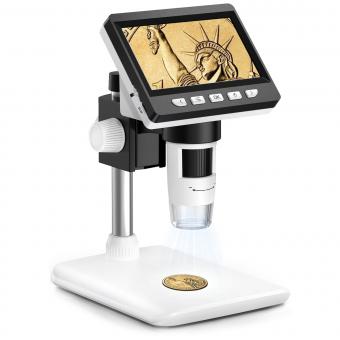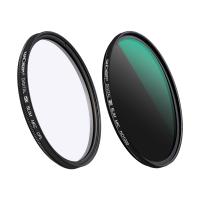How To See Plant Cells With A Microscope?
Microscopy is a fascinating field that opens up a world of tiny wonders, allowing us to see the intricate details of plant cells. Whether you are a student, a hobbyist, or a professional, understanding how to properly use a microscope to observe plant cells can be both educational and rewarding. This article will guide you through the process of preparing plant samples, using the microscope, and identifying key structures within plant cells.
Understanding the Basics of Microscopy

Before diving into the specifics of observing plant cells, it’s essential to understand the basics of microscopy. Microscopes come in various types, but for viewing plant cells, a compound light microscope is typically used. This type of microscope uses multiple lenses to magnify the sample, allowing you to see structures that are not visible to the naked eye.
Preparing Your Microscope

1. Clean the Lenses: Ensure that the lenses of your microscope are clean. Use lens paper or a soft cloth to gently wipe the eyepiece and objective lenses. Avoid using regular tissue or cloth as they can scratch the lenses.
2. Adjust the Light Source: Proper lighting is crucial for clear observation. Adjust the microscope’s light source to ensure it is bright enough to illuminate the sample without causing glare.
3. Set the Objective Lens: Start with the lowest magnification objective lens (usually 4x or 10x). This will give you a broader view of the sample and make it easier to locate the area of interest.
Preparing Plant Samples

1. Choosing the Plant Material: Select a thin, translucent part of the plant, such as a leaf or a piece of stem. Thinner samples allow light to pass through more easily, providing a clearer view of the cells.
2. Making a Wet Mount:
- Cut a Thin Slice: Use a sharp blade or scalpel to cut a very thin slice of the plant material. The thinner the slice, the better the light will pass through, making the cells more visible.
- Place on a Slide: Place the thin slice on a clean microscope slide.
- Add a Drop of Water: Add a drop of water to the plant material. This helps to keep the sample hydrated and enhances the clarity of the cells.
- Cover with a Coverslip: Gently place a coverslip over the sample. Avoid trapping air bubbles, as they can obstruct your view.
3. Staining the Sample (Optional): Staining can help to highlight specific structures within the plant cells. Common stains include iodine, which highlights starch granules, and methylene blue, which stains the nucleus. To stain your sample:
- Add a drop of stain to the plant material before placing the coverslip.
- Allow the stain to sit for a few minutes.
- Rinse off excess stain with a drop of water before covering with the coverslip.
Observing Plant Cells

1. Focusing the Microscope:
- Start with Low Magnification: Begin with the lowest magnification objective lens. Use the coarse focus knob to bring the sample into view.
- Fine-Tune the Focus: Once the sample is visible, use the fine focus knob to sharpen the image.
- Increase Magnification: After locating the area of interest, switch to a higher magnification objective lens (40x or 100x) for a more detailed view. Use the fine focus knob to adjust the clarity.
2. Identifying Plant Cell Structures:
- Cell Wall: The rigid outer layer that provides structure and protection.
- Cell Membrane: Located just inside the cell wall, it controls the movement of substances in and out of the cell.
- Nucleus: The control center of the cell, usually visible as a dark, round structure.
- Chloroplasts: Green, oval-shaped structures responsible for photosynthesis.
- Vacuole: A large, central sac that stores water and nutrients.
Troubleshooting Common Issues
1. Blurry Image: Ensure the sample is thin enough and properly hydrated. Adjust the focus knobs slowly and carefully.
2. Air Bubbles: Gently tap the coverslip to move air bubbles to the edge of the slide.
3. Insufficient Light: Adjust the light source or diaphragm to increase brightness.
Enhancing Your Observations
1. Use Different Stains: Experiment with different stains to highlight various cell structures.
2. Capture Images: Use a camera or smartphone adapter to capture images of your observations. This can be useful for documentation and further study.
3. Compare Different Plant Parts: Observe cells from different parts of the plant (e.g., leaves, stems, roots) to understand the diversity of cell structures and functions.
Observing plant cells with a microscope is a rewarding experience that can deepen your understanding of plant biology. By following the steps outlined in this article, you can prepare samples effectively, use your microscope correctly, and identify key cell structures. Whether for educational purposes or personal interest, mastering the art of microscopy opens up a new dimension of the natural world, allowing you to appreciate the complexity and beauty of plant life at a cellular level. Happy observing!







































